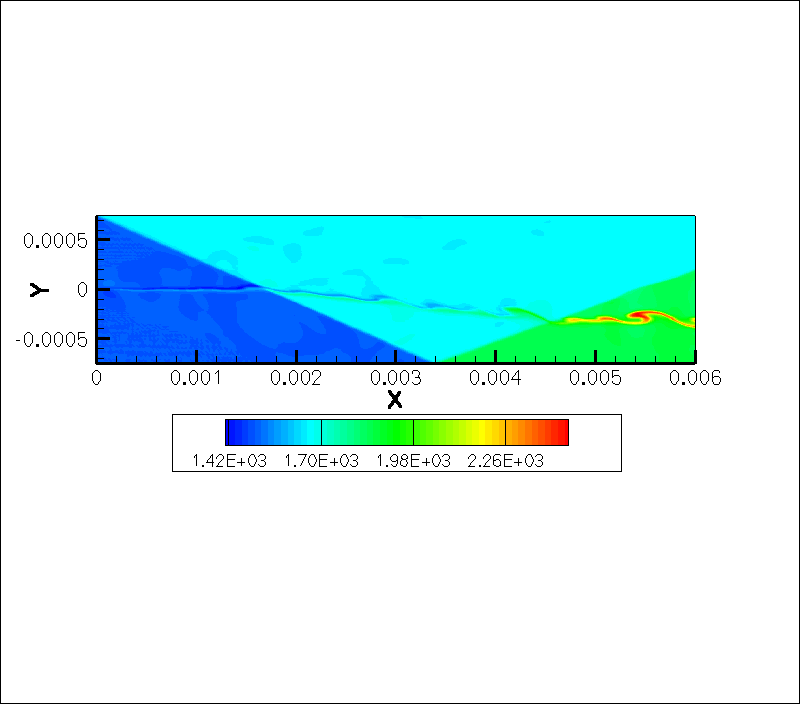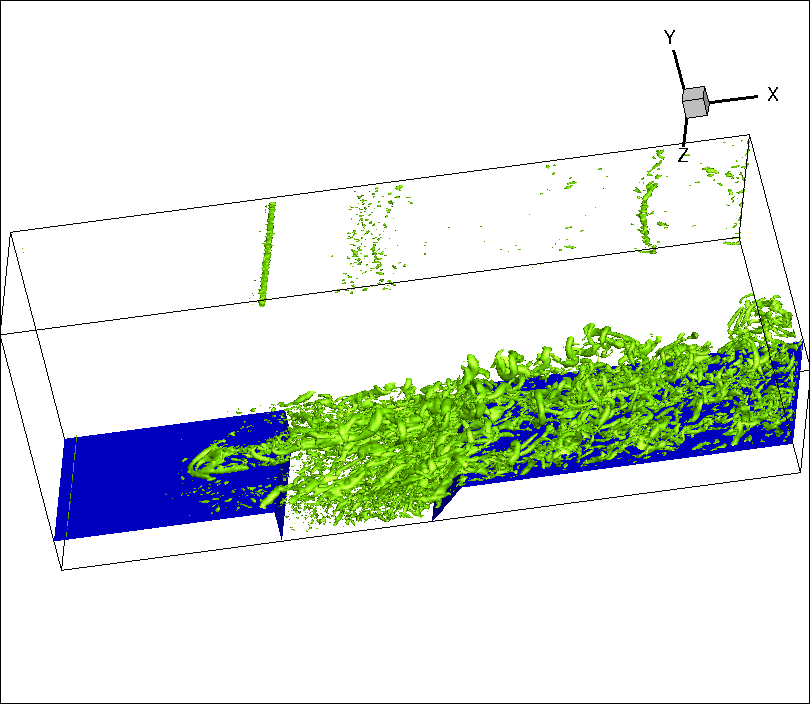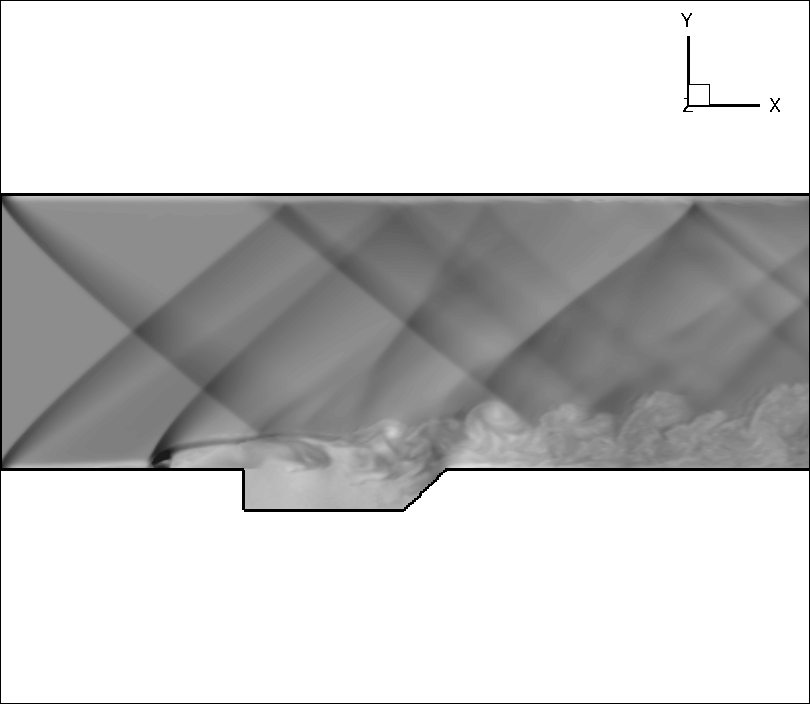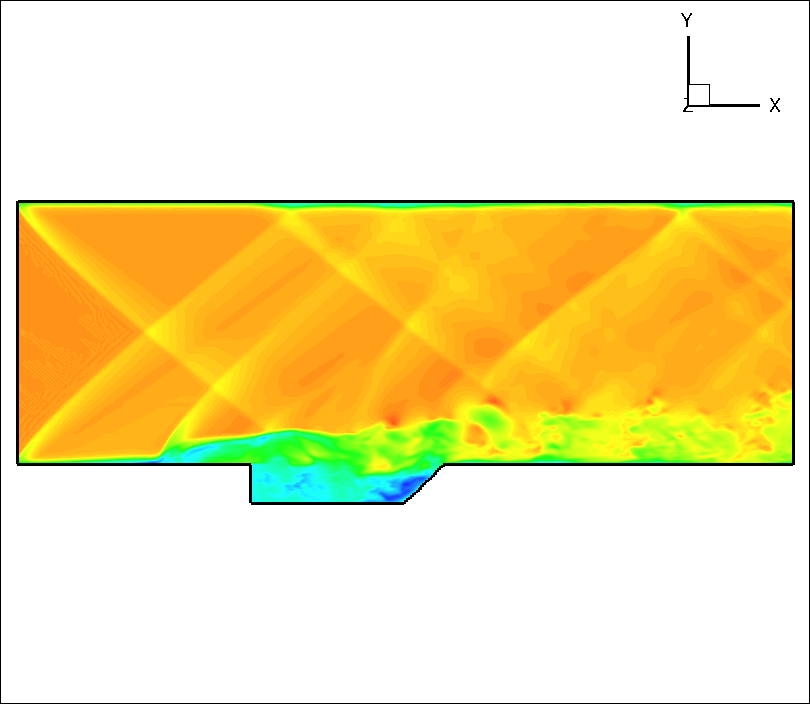Computational Fluid Dynamics Laboratory
Supersonic Combustion
Scramjet (supersonic combustion ramjet) engines offer tremendous potential for
high-speed transport of missiles and aircraft. High speed air is compressed
by the ram effect in the inlet of the scramjet. Fuel (typically hydrogen or
some hydrocarbon) is injected into the supersonic airstream and, hopefully,
mixes, ignites, and burns. Ejection of the high enthalpy gases through a nozzle
produces the desired thrust. We say hopefully because all of the above must
occur in less than several milliseconds of residence time within the engine.
Hence, rapid mixing, ignition, and combustion is key and flameholding and
stability become critical. Because of the difficulties in conducting flight,
and even ground, testing, computational modeling plays a key role. Because
of the time scales involved turbulent-chemistry interactions and the influence
of complex shock structures is important. The focus on transient events suggest
the use of large eddy simulation requiring accurate and efficient subgrid-scale
turbulent combustion models capable of handling detailed finite-rate chemical
kinetics. Numerical methods must simultaneously be able to capture broadband
turbulence with minimal numerical dissipation and capture shocks with minimal
spurious oscillations. We are exploring the use of both high-order ESWENO
and hybrid
central/upwind schemes for numerics with direct closures for SGS combustion.
Below we show ESWENO simulation snapshots of OH and T from a 2D H2-Air reacting shear layer
interacting with an oblique shock wave followed by a density snapshot from a hybrid
central/upwind simulation of supersonic flow over a step. Also snapshots from 3D
simulations of supersonic flow (air) with scalar (fuel) injection flowing over
a cavity are shown. Look for super cool movies in the near future.











